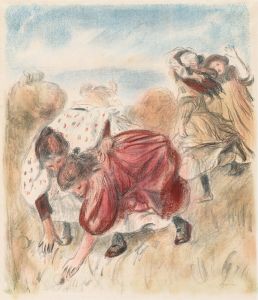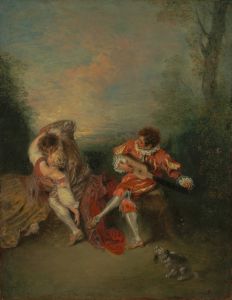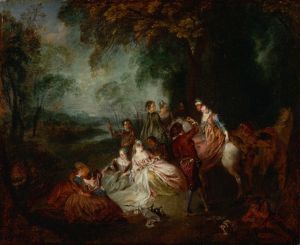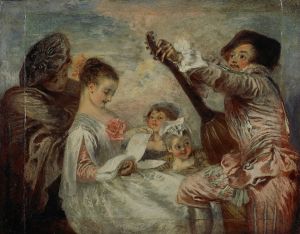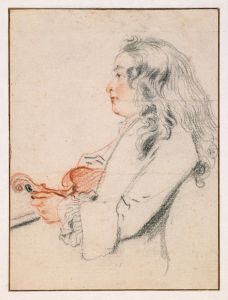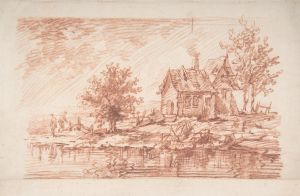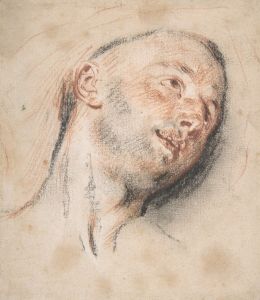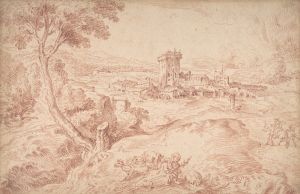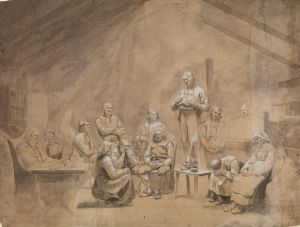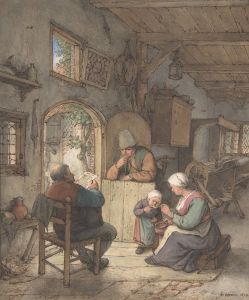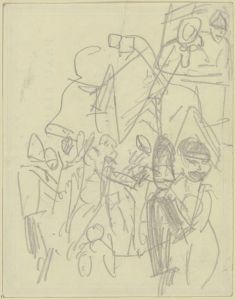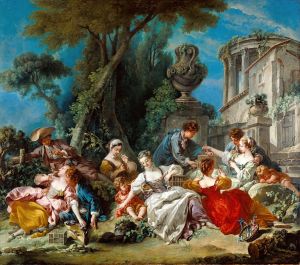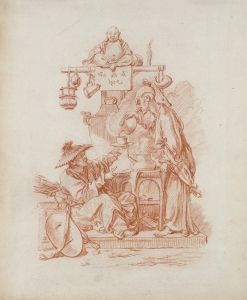
The Love Lesson
A hand-painted replica of Jean-Antoine Watteau’s masterpiece The Love Lesson, meticulously crafted by professional artists to capture the true essence of the original. Each piece is created with museum-quality canvas and rare mineral pigments, carefully painted by experienced artists with delicate brushstrokes and rich, layered colors to perfectly recreate the texture of the original artwork. Unlike machine-printed reproductions, this hand-painted version brings the painting to life, infused with the artist’s emotions and skill in every stroke. Whether for personal collection or home decoration, it instantly elevates the artistic atmosphere of any space.
Jean-Antoine Watteau's painting The Love Lesson is a notable example of the Rococo style, which flourished in early 18th-century France. Watteau (1684–1721) was a highly influential French painter known for his innovative approach to composition and his ability to capture the subtleties of human emotion and interaction. His works often depicted scenes of aristocratic leisure and romantic encounters, themes that were central to the Rococo aesthetic.
The Love Lesson is believed to have been created around 1716–1717, during the height of Watteau's career. The painting portrays a group of elegantly dressed figures in an outdoor setting, a hallmark of Watteau's fêtes galantes genre. These scenes typically feature well-dressed individuals engaging in courtship or leisurely activities in idyllic, pastoral landscapes. In The Love Lesson, the central focus is on a young couple, with the man seemingly instructing or serenading the woman, possibly with a musical instrument. The interaction between the figures suggests themes of romance, flirtation, and the complexities of love.
The composition of the painting is characterized by its delicate use of color, soft brushwork, and attention to detail in the figures' attire and expressions. Watteau's mastery of light and shadow creates a sense of depth and atmosphere, enhancing the dreamlike quality of the scene. The surrounding landscape, with its lush foliage and serene ambiance, serves as a harmonious backdrop that complements the intimate interaction between the characters.
As with many of Watteau's works, The Love Lesson reflects the cultural and social dynamics of early 18th-century France, particularly the emphasis on refinement, elegance, and the pursuit of pleasure among the aristocracy. The painting also demonstrates Watteau's ability to blend realism with idealization, capturing both the physical beauty and emotional nuances of his subjects.
The exact provenance of The Love Lesson is not well-documented, but it is currently housed in the National Gallery of Art in Washington, D.C. The painting remains an important example of Watteau's contribution to the Rococo movement and his enduring influence on the history of art.





